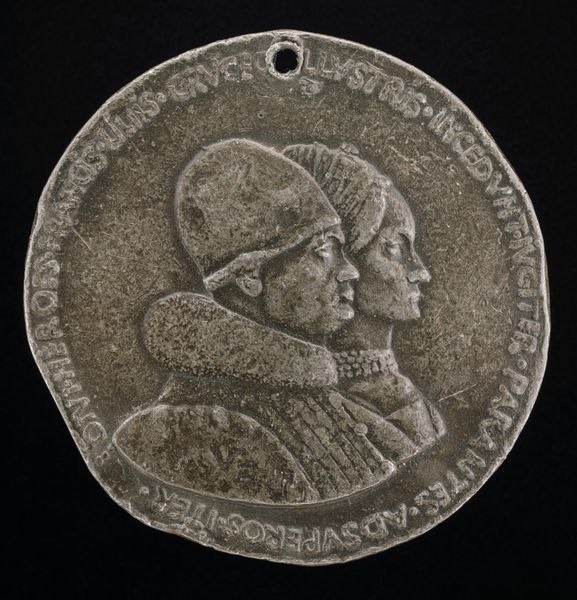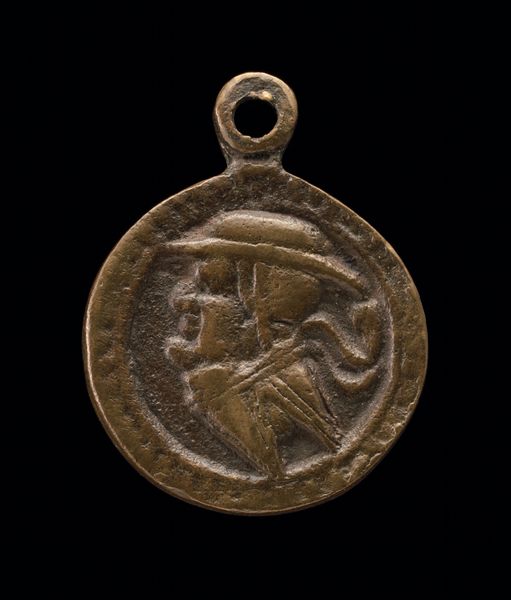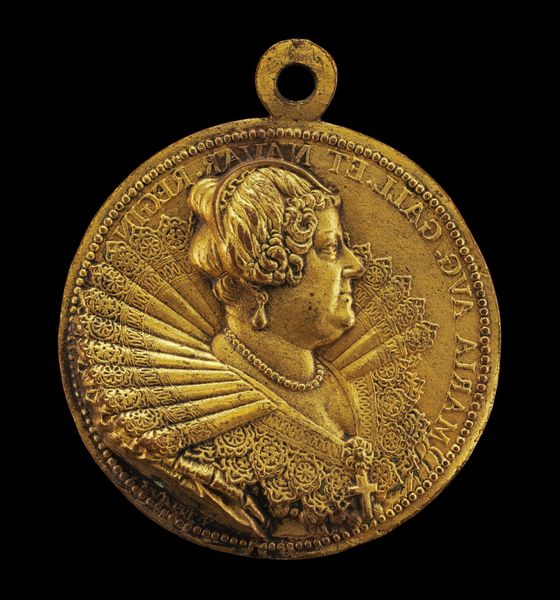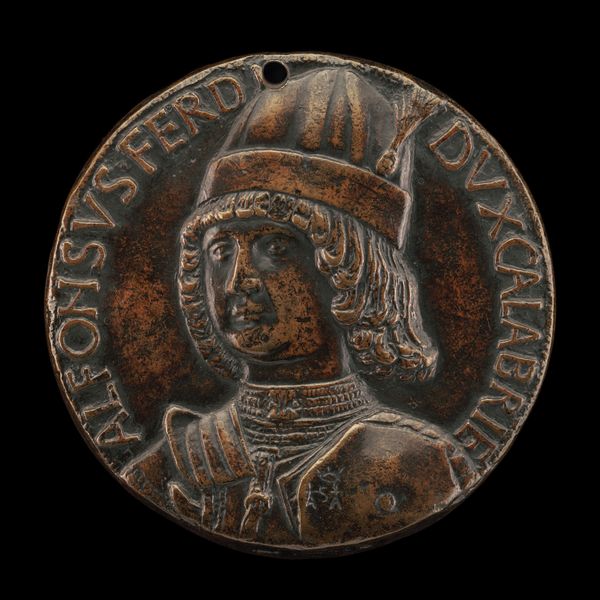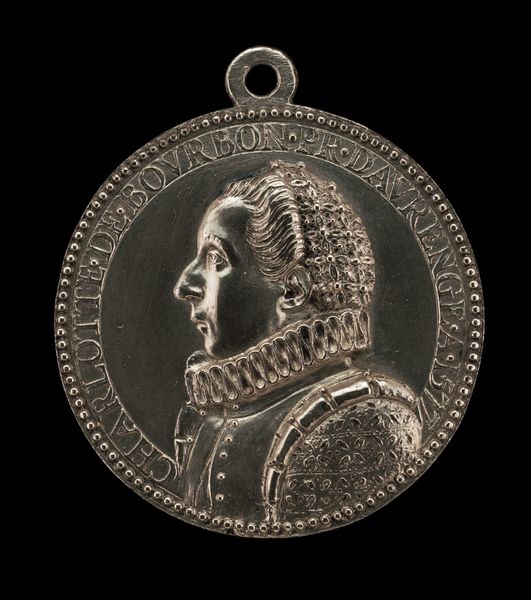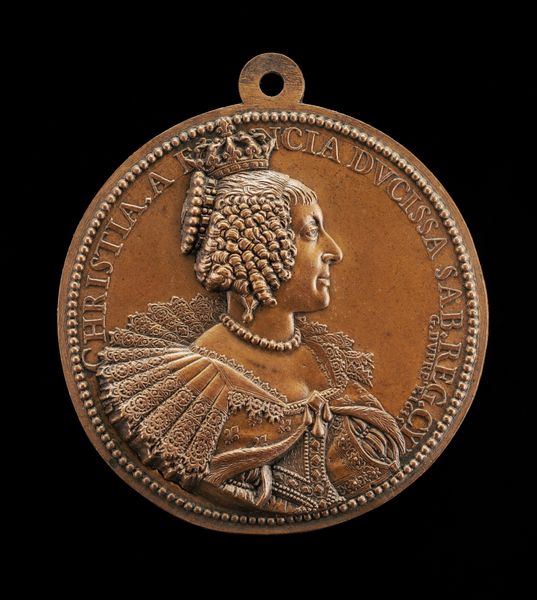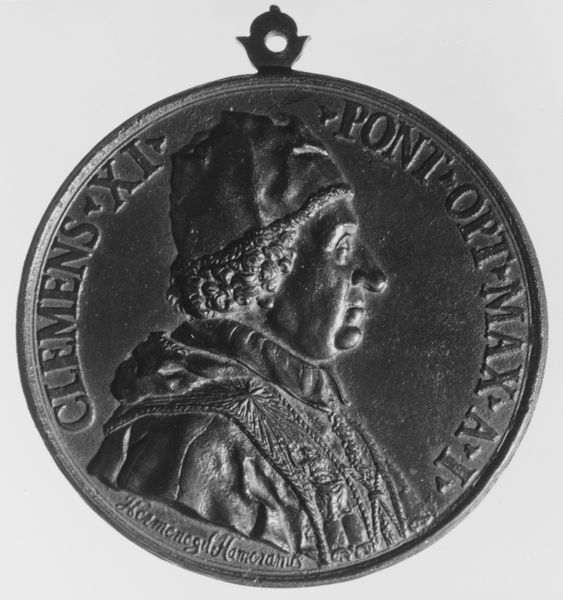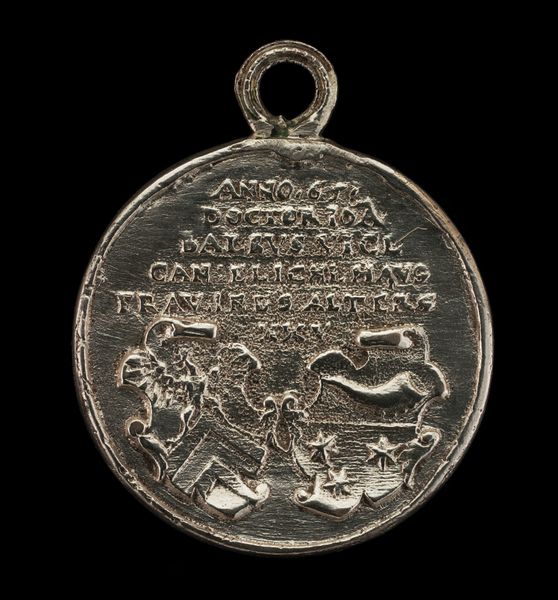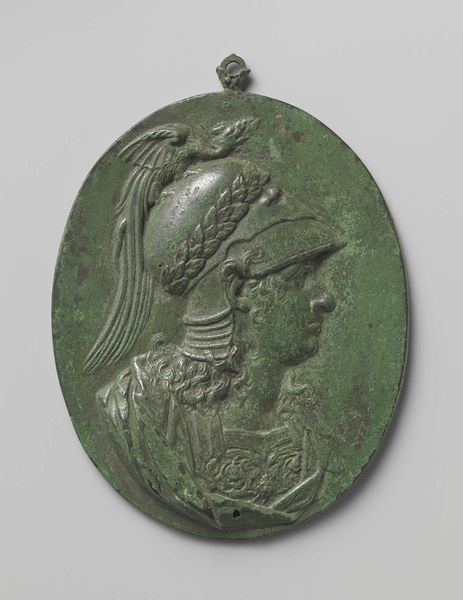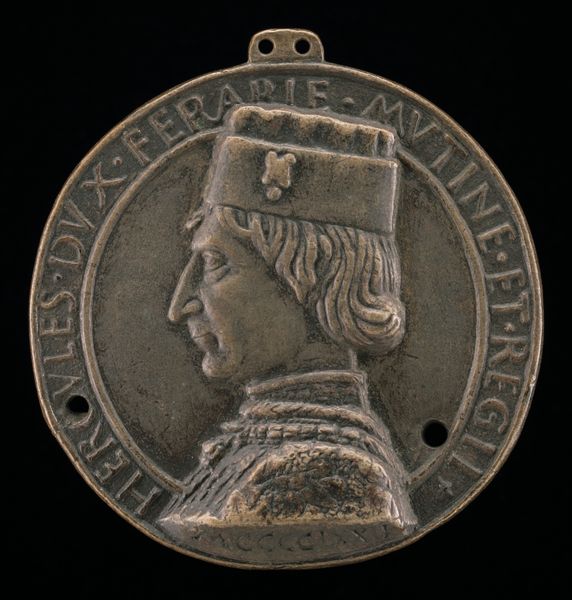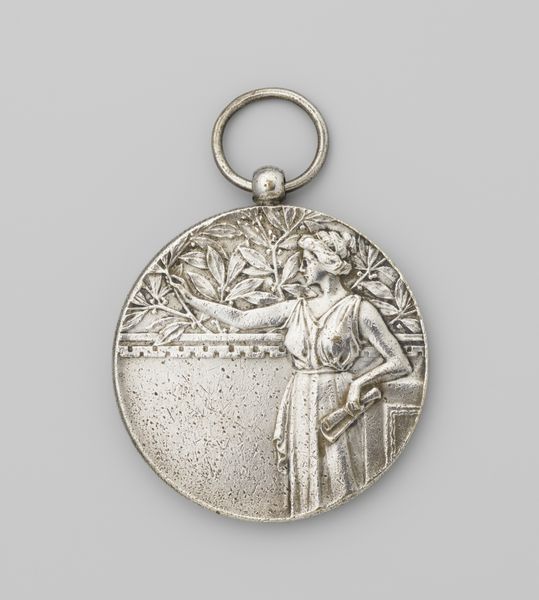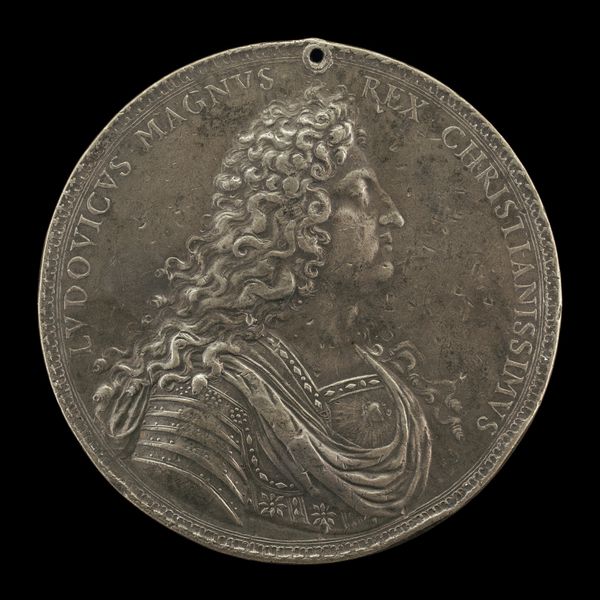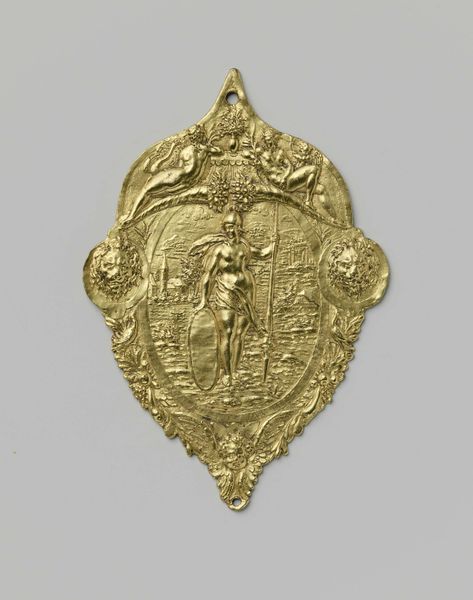![Margarethe Ganzhorn Balbus, Wife of Johann Balbus [obverse] by Joachim Deschler](/_next/image?url=https%3A%2F%2Fd2w8kbdekdi1gv.cloudfront.net%2FeyJidWNrZXQiOiAiYXJ0ZXJhLWltYWdlcy1idWNrZXQiLCAia2V5IjogImFydHdvcmtzLzI3Y2Y2ODg1LThmNTQtNGI5MS1hMmMyLTIwYWJhOTU3M2JiMS8yN2NmNjg4NS04ZjU0LTRiOTEtYTJjMi0yMGFiYTk1NzNiYjFfZnVsbC5qcGciLCAiZWRpdHMiOiB7InJlc2l6ZSI6IHsid2lkdGgiOiAxOTIwLCAiaGVpZ2h0IjogMTkyMCwgImZpdCI6ICJpbnNpZGUifX19&w=3840&q=75)
Margarethe Ganzhorn Balbus, Wife of Johann Balbus [obverse] 1565
0:00
0:00
metal, sculpture
#
portrait
#
medal
#
metal
#
sculpture
#
11_renaissance
#
sculpture
Dimensions: overall (height with suspension loop): 4.75 cm (1 7/8 in.) overall (diameter without loop): 3.94 cm (1 9/16 in.) gross weight: 31.15 gr (0.069 lb.) axis: 12:00
Copyright: National Gallery of Art: CC0 1.0
Curator: Looking at this piece, I’m struck by the cool detachment, a quiet formality emanating from this metalwork. The monochrome palette feels simultaneously timeless and a little melancholy. Editor: We're observing a portrait medal here. It represents Margarethe Ganzhorn Balbus, the wife of Johann Balbus, created in 1565 by Joachim Deschler. It’s a compelling artifact in understanding the lives of women within Renaissance society. This was a period marked by burgeoning social mobility and the commodification of image and status, but still incredibly repressive. Curator: Tell me more about the formal choices made in the portrait. There’s a delicate interplay of light and shadow that seems to define the subject's facial structure. I'm interested in what these contrasts can tell us. Editor: Deschler employs portraiture conventions to project respectability and piety. Her elevated status comes from marriage and bearing the social expectation that she must enable her husband’s work. Observe the inscription circling the image: "MARGARETA DOCTOR VUILM GATZ BORNIS FELICHE DOCT[ORIS]". This indicates scholarly affiliations of both her family, as well as her husband's. These pieces allow us to examine the evidence of an education she may have received, if only by familial relation, when considering female education during that period. Curator: It's the meticulous detailing in the ruff and head covering that captures my attention. See how the metal reflects and refracts light, creating texture. What do these visual details tell us about her role and societal positioning? Editor: Costume, jewelry, all become semiotic markers that signify belonging to an elite class. But also, doesn't this representation reinforce certain visual standards expected of women? I think about the performativity inherent in commissioning such a piece. There is both agency and constraint in how Margarethe chooses to be presented, and also how Deschler, as a man, chooses to frame her story. Curator: So, from a compositional point of view, how would you consider the work? The circular format, the careful arrangement of text... it creates an almost self-contained universe. Editor: The choice of metal itself speaks volumes. A seemingly eternal metal meant to persist as testament for the Balbus name. Considering portrait medals, the goal was not merely creating likenesses but solidifying narratives of power, influence, and, in Margarethe’s case, contributing to that patriarchal legacy. Curator: Thanks. Analyzing Deschler’s work, in metal, helps decode some intricate facets of societal expectations placed on elite women. Editor: It allows us a peek into 16th-century German Renaissance society.
Comments
No comments
Be the first to comment and join the conversation on the ultimate creative platform.
